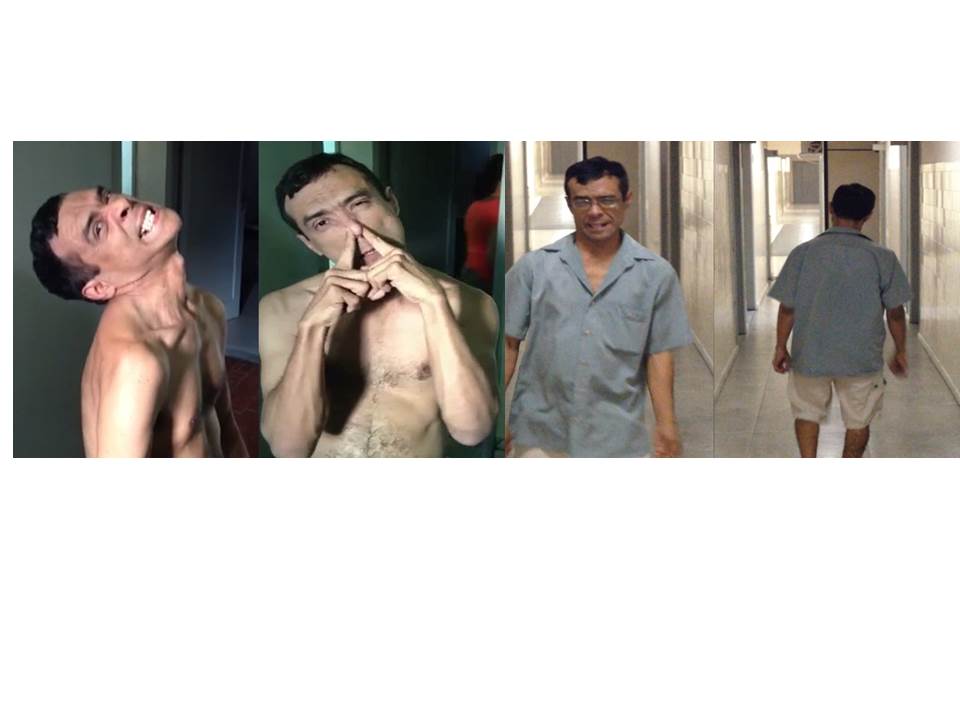Session Information
Date: Tuesday, September 24, 2019
Session Title: Dystonia
Session Time: 1:45pm-3:15pm
Location: Les Muses Terrace, Level 3
Objective: To describe the use of botulinum toxin in the treatment of tardive dystonia.
Background: Tardive dystonia (TD) was recognized as a complication of dopamine receptor blocking agents such as antipsychotic and anti-emetic drugs since 1960s. The risk of developing (TD) begins with the initiation of therapy, there being no safe period of exposure, with a wide range of development after exposure, ranging from days to decades.
Method: A 53-year-old man, diagnosed with paranoid schizophrenia at 17 years of age, has been treated with first and second generation neuroleptics for about 20 years. Started in 2010 a cervical and facial dystonia with pain that progressed to a disabling condition not responsive to the pharmacological approach (clonazepam and clozapine). The physical examination showed intense cervical dystonia with marked retrocollis and laterocollis to the right with sensory trick, and facial spasms.(vídeo) There was a marked functional recovery after the application of botulinum toxin type A (BT TX) guided by electromyography (EMG) in cervical muscles. The effect of BT TX had a duration of 4 months, requiring regular applications.
Results: Men tend to develop TD after shorter exposure and in a younger age when compared to women. Although BT TX is widely used in the treatment of dystonia and spasticity, there are few studies on its use in TD, but the effect seems to be similar to idiopathic dystonias, with de TD requiring larger doses . The patient in question achieved marked improvement after application of BT TX, with great improvement of mobility and resolution of pain, transiting of severe functional disability to oligosymptomatic state, with physical examination showing only discrete laterocollis. Although good results with BT TX are common, such expressive results are uncommon in the literature.
Conclusion: It is clear that further studies are needed to understand the range of responses to treatment presented by patients with TD. TX BT should be considered in this cases guided by EMG when possible to obtain better results. The understanding of the pathophysiology and the mechanisms involved in the pharmacological responses should bring advances in the treatment of TD in the future.
To cite this abstract in AMA style:
LFV. Vasconcellos, MS. Spitz, DN. Nassif, BRA. Andrade. Tardive Cervical Dystonia: Treatment with Botulinum: Treatment with Botulinum Toxin Guided by Electromyography [abstract]. Mov Disord. 2019; 34 (suppl 2). https://www.mdsabstracts.org/abstract/tardive-cervical-dystonia-treatment-with-botulinum-treatment-with-botulinum-toxin-guided-by-electromyography/. Accessed April 21, 2025.« Back to 2019 International Congress
MDS Abstracts - https://www.mdsabstracts.org/abstract/tardive-cervical-dystonia-treatment-with-botulinum-treatment-with-botulinum-toxin-guided-by-electromyography/

